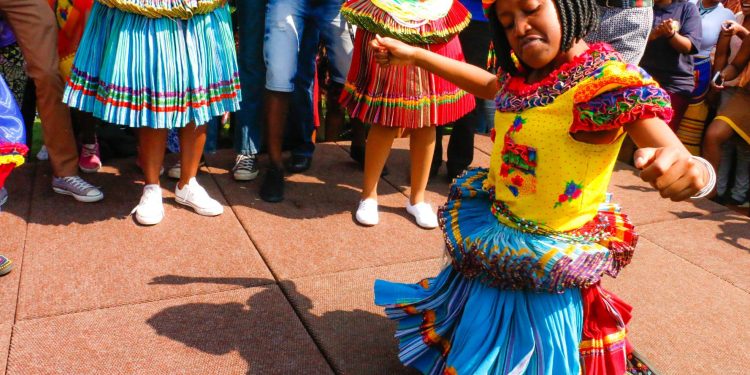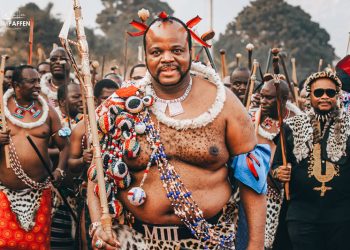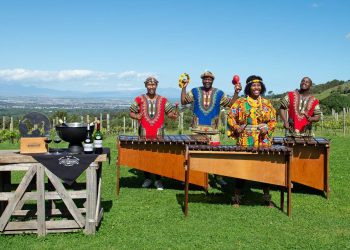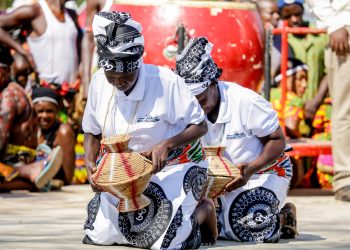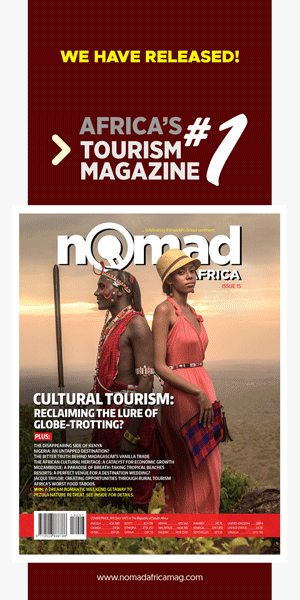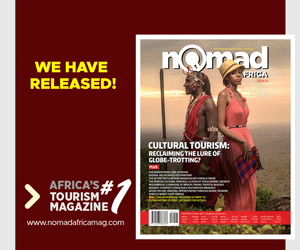The Tsonga, also known as Vatsonga, and other small groups, such as the Shangaan, Tonga, and Thonga, are Bantus who mainly lived in southern Mozambique. According to the missionaries who landed in Mozambique in the 18th century, they encountered the Tsonga tribes along the coast of Mozambique. They inhabited Mozambique’s coastal plains, where they were trading bartered cloths, and beads for copper and salt. During the following century, they first moved to the areas around the Limpopo and the later Mpumalanga. They finally settled in the greater Transvaal Province in South Africa.
The Tsonga speak Xitsonga, an ethnic language that emerged in the late 1500s. It is now one of the official languages in South Africa. Some historians stated that the “language was already-spoken by the primitive occupants of the country more than 500 years before the arrival of Swiss missionaries” (Junod 1912, p. 32). Paul Berthoud, a Swiss missionary, decided to learn this Xitsonga language and write a hymn book. He published his first book written in Xitsonga in 1883. The Tsonga also speak other languages, such as Xibila, Xidjonga, and others, since they comprise different tribes among them.
After they settled in South Africa, they continued to engage in barter trade, which led to them migrating from one place to the other. They also started to form settlements, where they became active in mixed agriculture and pastoralism. The men and the boys in their communities used to care for the animals and cleared the land before cultivation of their crops. The women were responsible for the planting and maintenance of the crops. Cassava was one of their staple foods, but they also grew corn and millet. The men were in charge of cultivating tobacco, which they called ‘fole’. The Tsongas practised cooperative crop harvesting on a rotational basis. Crop harvesting was a festive occasion. The community would gather to harvest each person’s crop and the host would provide refreshments in liberal quantities. The men also practised hunting and they sold large numbers of animal fur to the Zulu tribes.
Like most Bantu cultures, the Tsonga people have a strong acknowledgement of their ancestors, who are believed to have a considerable effect on the lives of their descendants. The traditional healers are called n’anga. Legend has it that the first Tsonga diviners of the South African lowveld were a woman called Nkomo We Lwandle (Cow of the Ocean) and a man called Dunga Manzi (Stirring Waters). A powerful water serpent, Nzunzu (Ndhzhundzhu), allegedly captured them and submerged them in deep waters. They did not drown, but lived underwater breathing like fish. Once their kin had slaughtered a cow for Nzunzu, they were released and emerged from the water on their knees as powerful diviners with an assortment of potent herbs for healing. Nkomo We Lwandle and Dunga Manzi became famous healers and trained hundred of women and men as diviners.
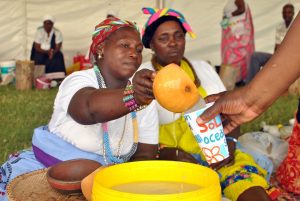
Among the Tsongas, symptoms such as persistent pains, infertility and bouts of aggression can be interpreted as signs that an alien spirit has entered a person’s body. When this occurs, the individual will consult a n’anga to diagnose the cause of illness. If it has been ascertained that the person has been called by the ancestors to become a n’anga, they will become a client of a senior diviner who will not only heal the sickness, but also invoke the spirits and train them to become diviners themselves. The legend of the water serpent is re-enacted during the diviner’s initiation, by ceremoniously submerging the initiates in water from which they emerge as diviners.
The kind of spirits that inhabit a person are identified by the language they speak. There are generally the Ngoni (derived from the word Nguni), the Ndau and the Malopo. The Ndau spirit possesses the descendants of the Gaza soldiers who had slain the Ndau and taken their wives.
Once the spirit has been converted from hostile to benevolent forces, the spirits bestow the powers of divination and healing on the nganga.
Most Tsonga people identify themselves as being religious and adhere to their religion; they have a strong acknowledgement of the important role of their ancestors. The Tsonga believe that humans have a physical body, referred to as ‘mmiri’, and a spiritual body that has two attributes known as moya and ndzuti. The moya enters the body at birth and is released after death to join the ancestors, while the ndzuti is the shadow and includes the human characteristics of a person.
Their traditional healers are called n’anga. The n’anga are responsible for the religious rituals and sacrifices done to pay homage to the ancestors. The Tsonga believe in good and evil spirits. They associate positive occurrences, incidents or happenings, such as adequate rain, with the good spirits, and sickness and unfortunate happenings with the evil spirits.
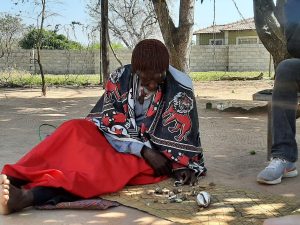
The Matlala, as the Tsonga people call it, is the initiation school for circumcision. Traditionally, all teenage boys are meant to attend it, after which they are regarded as men. Young teenage girls are meant to attend the Khomba, and they had to be virgins to be taught about womanhood and be readied for marriage. They would be taught how to behave or carry themselves and how to handle their duties as young women in the society.
The Tsonga did not practise child betrothal. A suitor usually sent a woman a grass or thorn ring to show his desire to marry her. If the chosen woman felt the same way about the suitor, she would send him a ring as well to confirm their relationship. Once the girl’s father approved, then dowry negotiations would begin before a marriage could take place.
In the rural environment, life was still very traditional and strongly influenced by cultural norms. Socially, a Tsonga homestead consisted of a man, his wife or wives, their children, and their married sons’ families. The homestead was circular, made from tree branches or stumps. The homestead was referred to as ‘Muti’. All children were housed separately and according to their gender. A special place, called ‘Huvo’, was used for meetings, and ‘gandzelo’ was used for sacrificial purposes. The ‘Vandla’, which can be in or out of the ‘Muti’ (the homestead), is where the men meet to discuss the affairs of the ‘Muti’ and of their community. No children or women are allowed in this area. In an extended family, the order in which three wives were married determines their rankings and level of respect. The first wife has the highest status and ranking. She has to be accorded due respect by the other wives in the ‘Muti’. Every child in the ‘Muti’ needs to obey and fulfil their specific duties, obligations, and rules of conduct.
Traditionally, the chief is known as ‘Hosi’. He has the final authority or decision-making powers concerning everything of importance in their community. The chief is an essential part of the Tsonga groups’ government. Chieftainship is hereditary and falls to the senior member of the strongest clan. The new chief has to appear before the community’s council for approval. Only after the council approves of the new chief, will he be able to be formally inducted into the office.
The Hosi, and especially during the past centuries, wielded supreme powers. They used to preside in rites, made decisions concerning any war and forming an army, headed ceremonies and giving out land. The chief was responsible for providing the final decision during severe cases of conflict and those on appeal from the tribal chiefs, the headmen. Still to date, they play a crucial role in the local communities. The chief’s position is powerful, and ‘tribal authorities’ became essential to the Bantustan system.
The Tsongas are also well known for their musical heritage, which is closely associated with various traditional instruments. The most prominent instruments include the stringed instruments, such as the Xizambi (notched vibrating bow) played by a musician holding the string by his teeth, while a stick with resonators is rubbed up and down the string to produce sounds. Other instruments include traditional wind and percussion instruments.
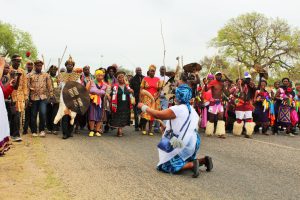
The Tsonga musicians usually perform during traditional celebrations and the people join in and dance. One of the most famous dances is the Xibelani. It is a movement-filled dance that exudes lively vibes. For these celebrations and the dances, the women are adorned in their traditional attire. They shake their waist and swirl their hips to the speedy and complicated dance routines.
The Tsonga have a rich and diverse culture that is really captivating. Their traditional language, music, food and attires exude a vibrant culture that still inspires this current generation. Hopefully, their unique and centuries-old customs will still be passed down to the generations to come.
For best culture tour packages click here. To compare, search and book affordable hotel & flight, visit this website here.


